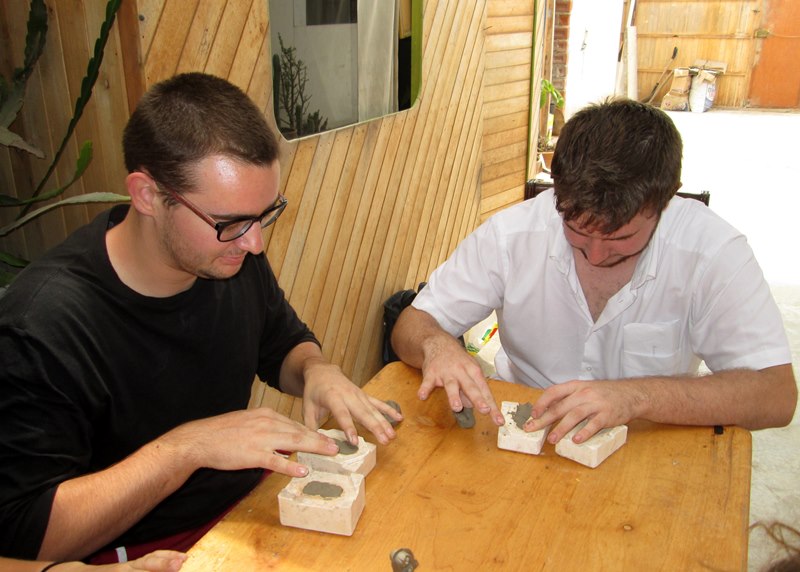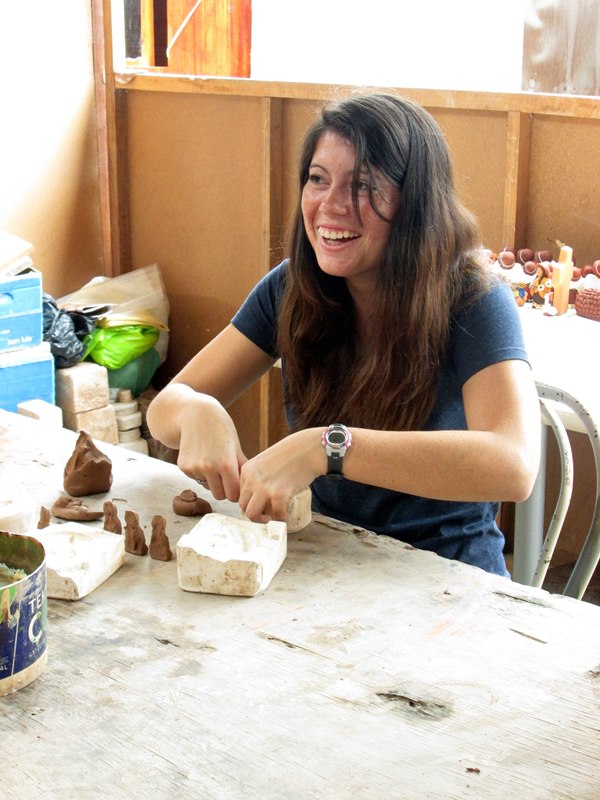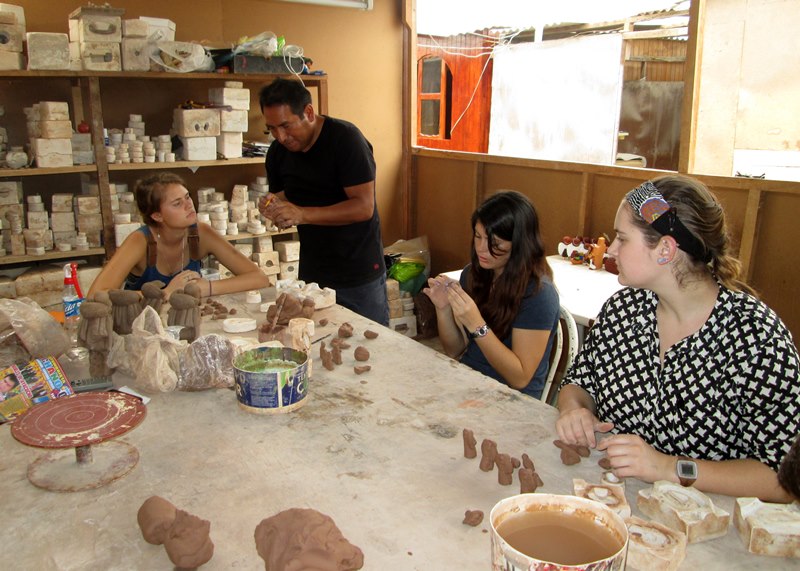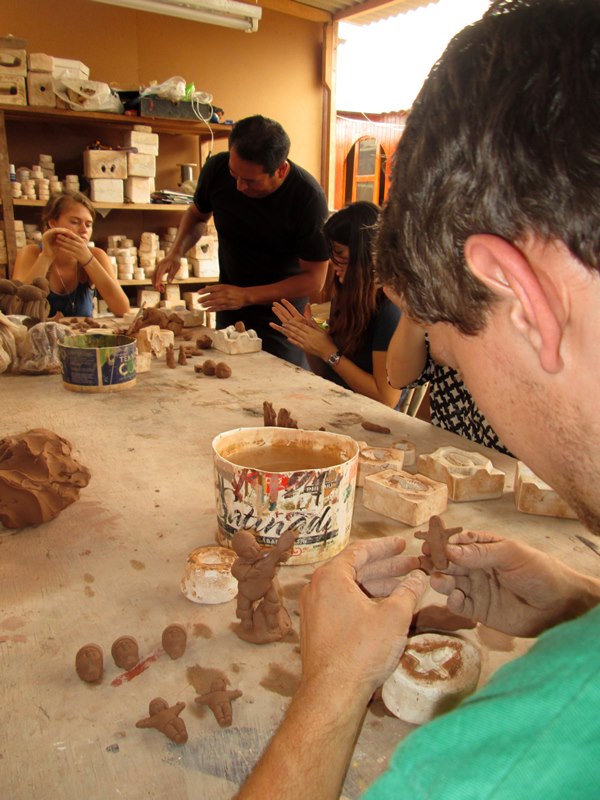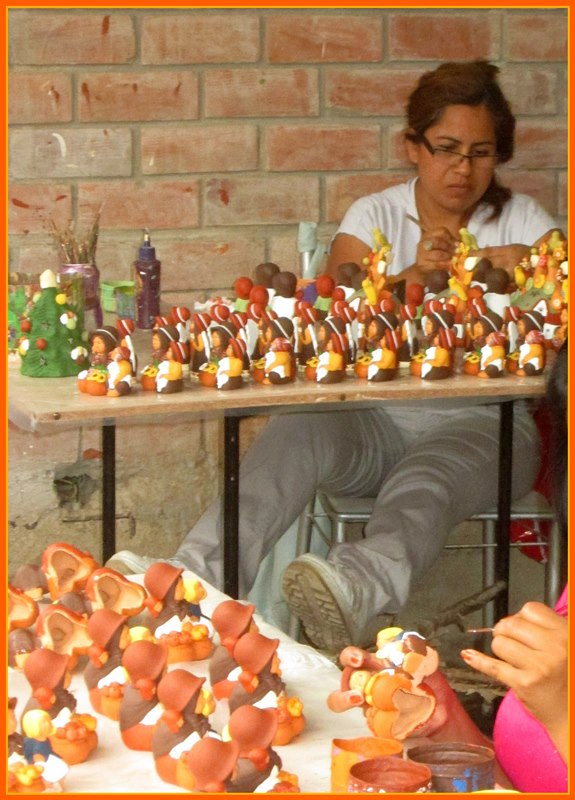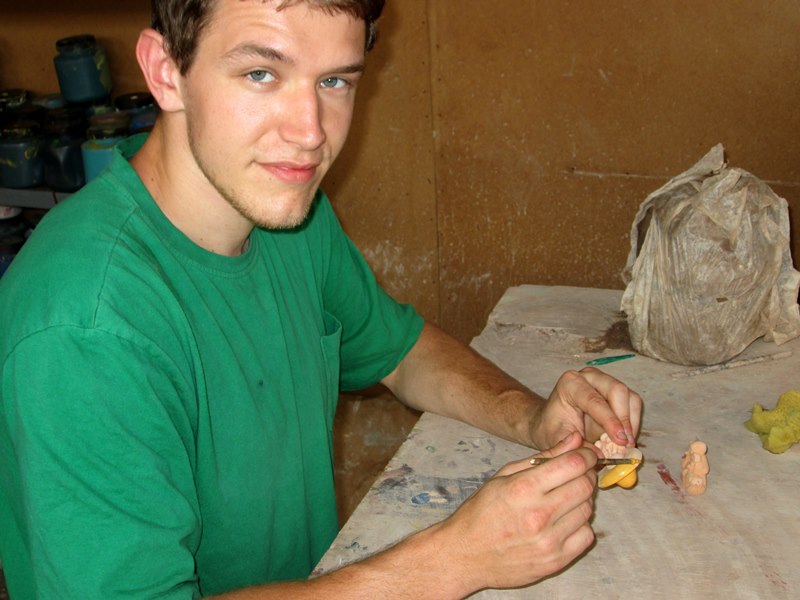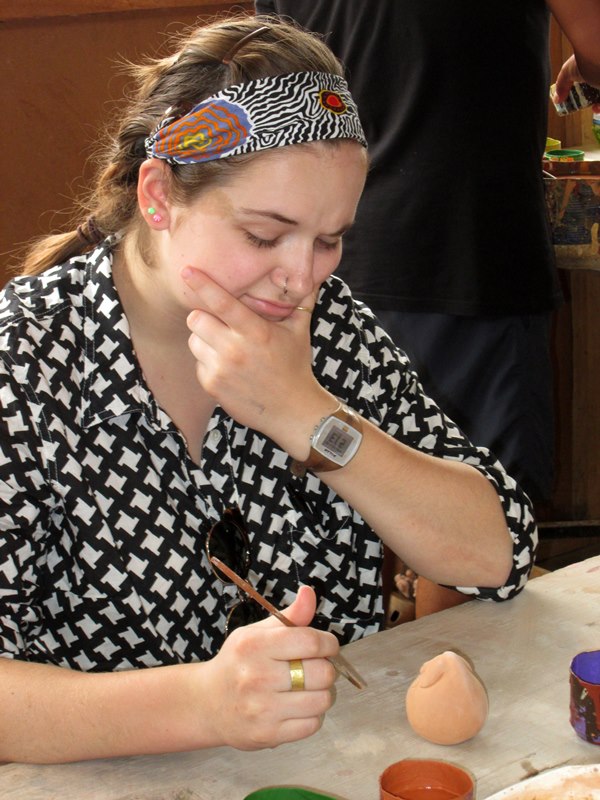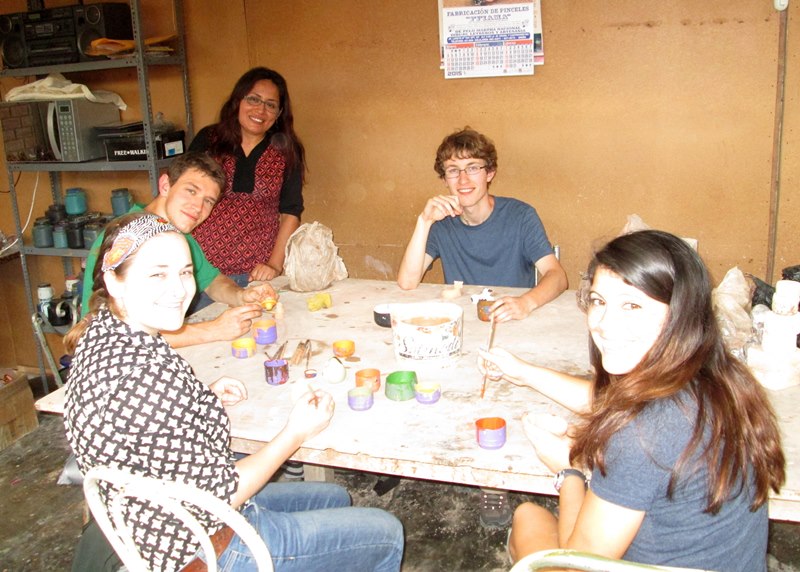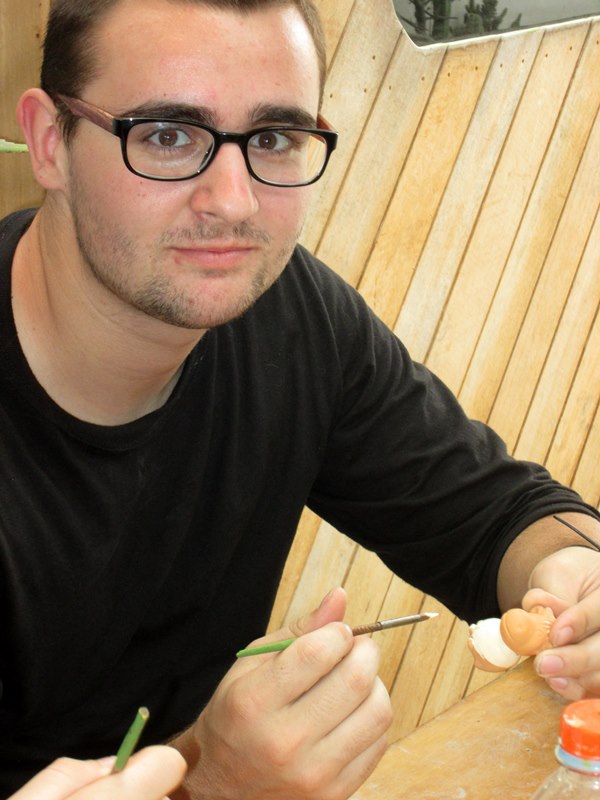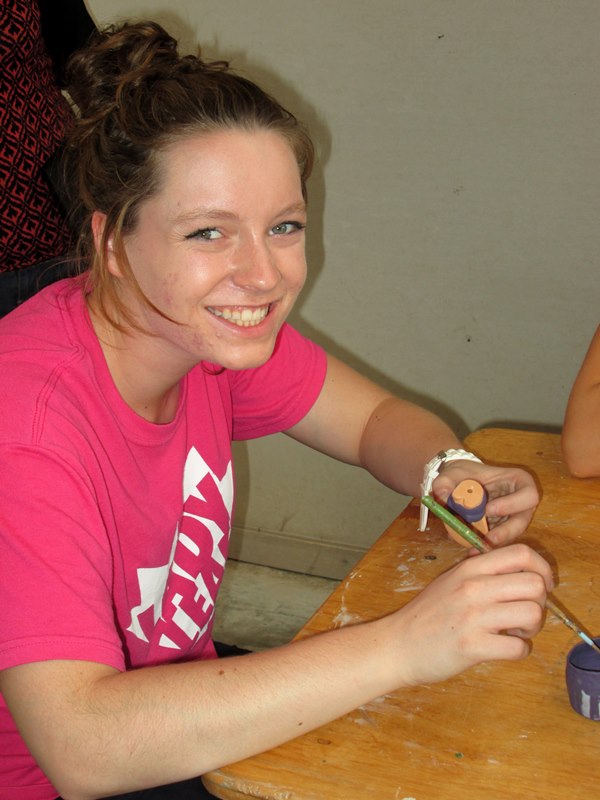Learning to Know the Artists and Economics of Fair Trade
By Karen and Duane Sherer Stoltzfus
Peru SST Co-Directors, 2014-2015
A 10-minute walk from Casa Goshen, the home office of the SST program in Peru, we found Manos Amigas, a Christian organization that exports handicrafts on behalf of independent artists, advocating for fair prices and tracking shifts in consumer demand for crafts.
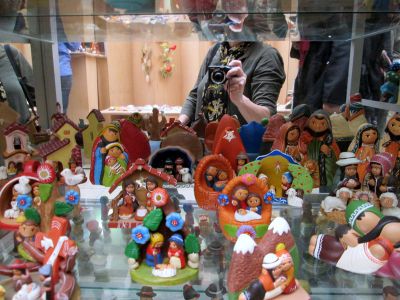
Yannina Meza, who directs Manos Amigas, or “Hands of Friendship,” met us at the door. She told us that Manos Amigas works with dozens of artisan groups and workshops in cities across the country, including several places where students will travel for service (Ayacucho and Cusco). The artisans’ knitted scarves and gloves, carved gourds, polished stone earrings and other products are shipped abroad.
One of the organization’s largest clients is Ten Thousand Villages, a fair trade retailer with shops in Goshen and Mishawaka, among many other locations.
Nativity scenes and other Christmas crafts have been, year round, the most popular products for export. Manos Amigas tries to balance demands of the marketplace with artistic freedom and Peruvian aesthetics.
It’s often not easy to find a right balance for “ethnic art,” she said. For example, Yannina mentioned that a buyer in France asked the Peruvians to give Mary blond hair in the Nativity scenes. She also held up a pink mug with a white rabbit that was specially ordered.
“You can’t recognize this as Peruvian,” she said. “You don’t know whether this came from Peru or China.”
Doug Lapp, who represents Ten Thousand Villages as the buyer for Latin America and the Middle East, happened to arrive in town just days after our visit. He’s also a high school buddy, and we met for coffee to catch up on news and talk about fair trade.
Ten Thousand Villages buys more crafts from Peru than from any other Latin American country, he said. In fact, Peru ranks in the top 5 worldwide (India is No. 1 and Bangladesh is No. 2). “The craft sector in Peru is well developed, whether through tourism or export marketing,” he said.
Ten Thousand Villages introduces 600 new items each year, including 15 to 20 from Manos Amigas. During his visit Doug said that he met with an artisan group of 10 or so women who live in the impoverished southern cone of Lima. They work with leather. When the market for their bags was softening last year, Doug suggested they produce suede earrings and Ten Thousand Villages placed an order.
“This year when I went to meet them I was wondering, ‘What am I going to buy now?'” he said. “In the past they had not been highly innovative. This year they had developed a new line of jewelry — some made with suede, some with copper. They had some really cool things.”
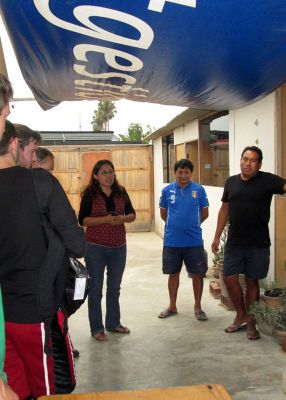
Doug said that Ten Thousand Villages buys from Manos Amigas and two other organizations in Peru and tries to maintain consistency in purchases from year to year; but the market in the States is still climbing back from the financial collapse in 2008.
Although Manos Amigas added five new clients, or purchasers, last year, it continues to be a challenging economic time. A year ago Manos Amigas employed 87 artisan groups, but at year-end they were forced to reduce the roll. In 2015, Manos Amigas contracts with 57 artisan groups. They also provide scholarships for the children of two artisan families.
We were closer to the source of fair trade crafts than most of us had ever been but we had a chance to get even closer. Together we took a bus to Chorrillos, a waterfront district at the southern end of Lima. We turned on to dirt roads as we made our way to the workshops of two master craftsmen who work in clay.
Edgar Quispe and his brother-in-law, Juan Carlos Huecho, both came to Lima from Quinua, a mountain town famous for ceramics, situated a short drive from Ayacucho, where the Shining Path emerged around 1980 and which remained at the center of the armed conflict over the next two decades.
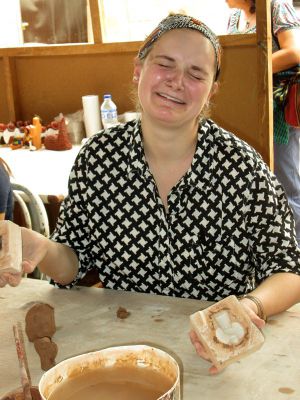
They migrated to Lima in part to escape the terrorism and also to be closer to a market for their ceramics. They create original molds of angels and other figures, which they give life too in shades of red, green, pink, blue, purple. They operate independent workshops, employing about 20 artisan assistants.
They not only showed us how they did their work; they also brought out clay and molds and paints, letting us assume the role of visiting artists. We soon discovered that a process that looked effortless in their hands came with a steep learning curve. Neither the shaping nor the painting was easy.
As we were leaving, Edgar and Juan Carlos gave each student an official workshop piece, a visual reminder of our visit and of what is possible with clay.


